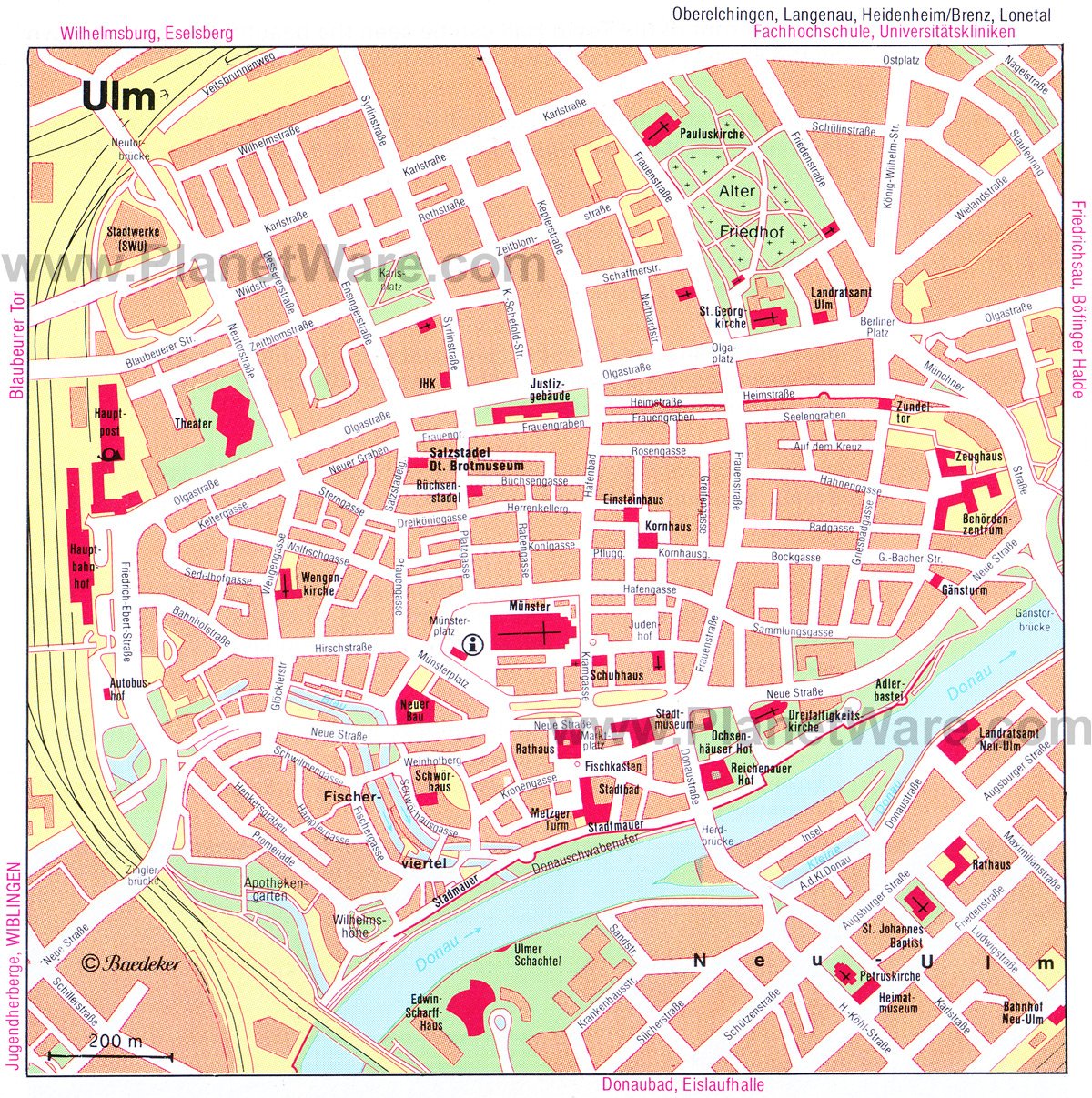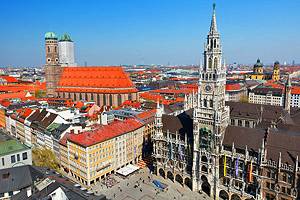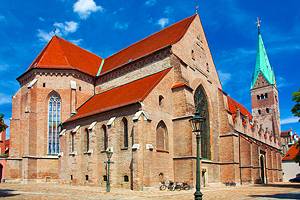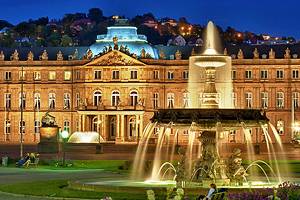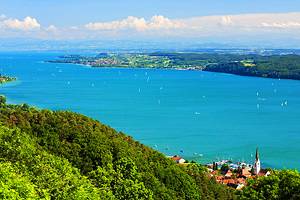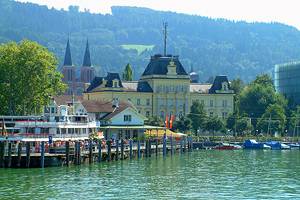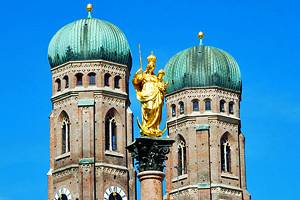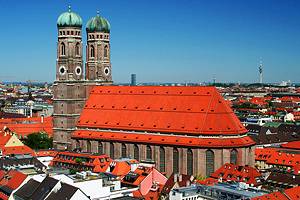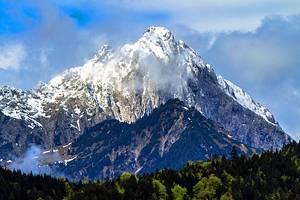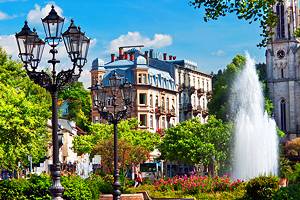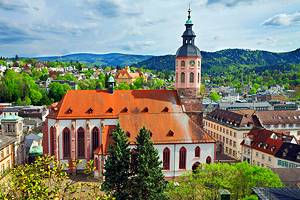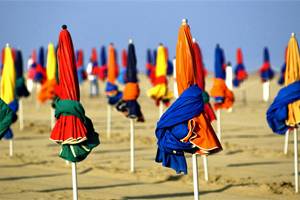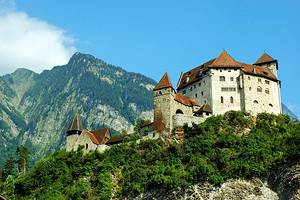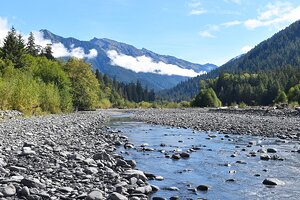12 Top Attractions & Things to Do in Ulm
The old German imperial city of Ulm, located on the left bank of the River Danube and founded in AD 850, is the economic and cultural center of Upper Württemberg and the starting point of the Upper Swabian Baroque Highway.
Even without its other interesting things to do, Ulm would be worth visiting for the magnificent Ulm Münster. Topped by the tallest church spire in the world - it stands at 162 meters in height - this impressive cathedral is widely regarded as one of the best preserved Gothic churches in Europe.
Tourists interested in architectural attractions will appreciate Ulm's striking blend of old and cutting-edge modern architecture, often side by side. The city is also known for its many theater, opera, and dance performances. It also boasts a first-rate professional orchestra, a large Christmas Market, and lively traditional festivals, such as Oath Monday and the Fishermen's Jousting Tournament.
Learn more about the best places to visit in this historic city, with our list of the top attractions and things to do in Ulm, Germany.
- Ulm Minster
- Wander the Old Fishermen's & Tanners' Quarters
- Explore Ulm Rathaus and Marktplaz
- Walk Ulm's Old Town Walls (Stadtmauer)
- Visit Museum Ulm
- Take a Side Trip to Wiblingen Abbey
- Visit the Museum of Bread Culture (Museum Brot und Kunst)
- The Oath House
- Take the Kids to the Tiergarten
- Danube Swabian Museum
- Kunsthalle Weishaupt
- Visit Ulm's Einstein Fountain
- Map of Attractions & Things to Do in Ulm
Ulm Minster
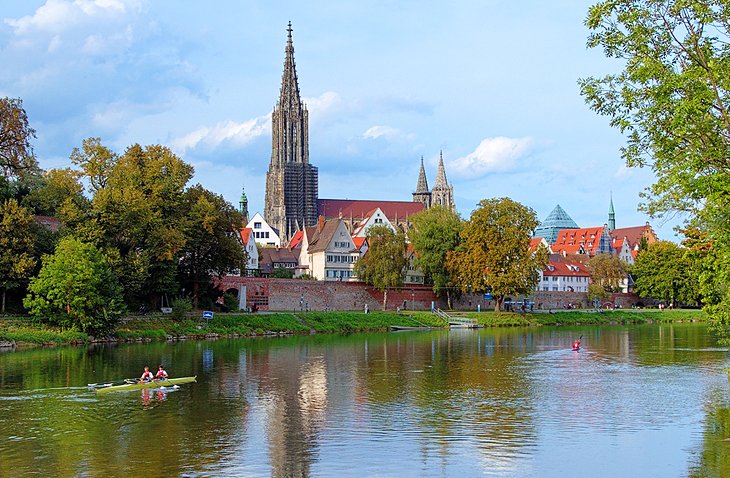
Located in the city center stands Ulm Minster (Ulmer Münster), Germany's largest Gothic church after Cologne Cathedral. Started in 1377, its soaring spire was a work in progress that began in the 14th century and was finally completed in 1890 on the basis of a sketch left by Matthias Böblinger.
The tallest church spire in the world at 162 meters - five meters taller than its counterpart in Cologne - it dominates the city skyline. It's a particularly stunning sight when viewed from the banks of the nearby River Danube, especially at night.
Interior highlights include its fine choir stalls built in 1469, as well as the narrow staircase inside the tower. While it's tough going, the wonderful views to the Alps make the hard work worth it. A series of organ recitals are held throughout the summer months and are well worth attending.
A rather more current take on church architecture can be seen in the St. John the Baptist Church. This no-less impressive structure was extensively remodeled in the modernist style in the 1920s.
Address: Münsterplatz 21, 89073 Ulm, Germany
Wander the Old Fishermen's & Tanners' Quarters
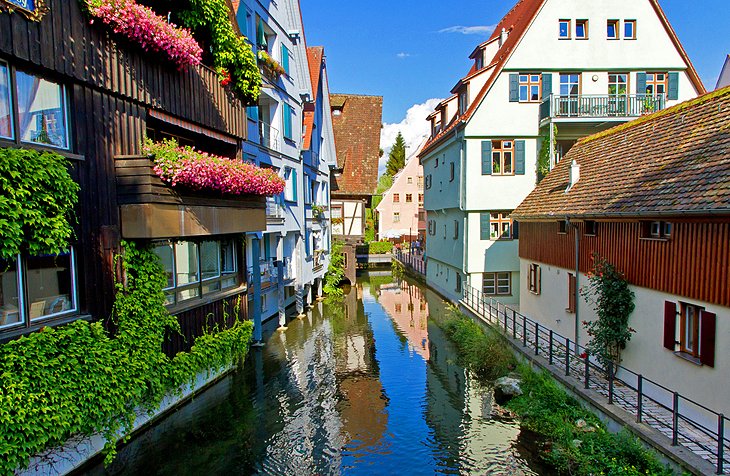
Set around the mouth of the River Blau, which flows into the Danube here, is where you'll find Ulm's very picturesque and skillfully restored Fischerviertel, the old Fishermen's and Tanners' Quarter. It's wonderful to explore on foot, and one of the favorite things to do in Ulm is to take a leisurely walking tour past its superbly restored half-timbered houses and stroll its inviting narrow alleyways and bridges.
A highlight of this fascinating area is the famous Crooked House (Das Schiefe Haus). This charming 14th-century timber-framed home is now a hotel (Hotel Schiefes Haus Ulm), but even if you're not staying here (it's a highly recommended experience), it's well worth seeing. Although much of its lean was corrected in 1620, it still leans over the river supported by its ancient beams.
The Fischerviertel area is also wonderful to explore at night when many of the old structures are lit up, and offers many excellent dining and shopping opportunities.
Address: Schwörhausgasse 6, Ulm, Germany
Explore Ulm Rathaus and Marktplaz
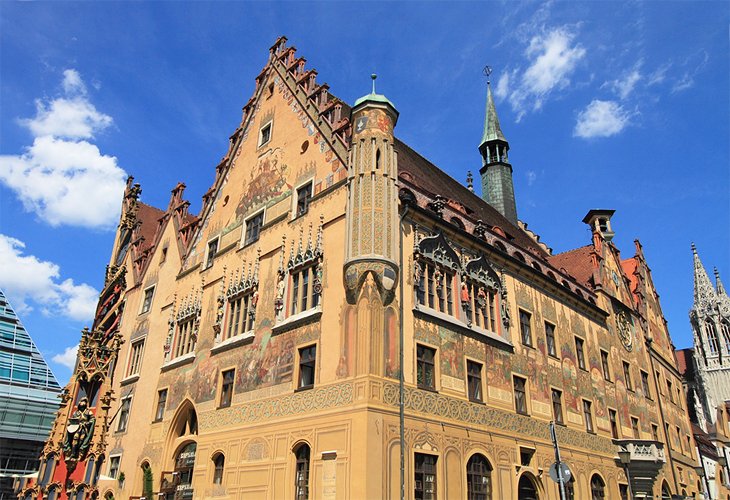
To the south of the Münster in the Marktplatz is the handsome Gothic Town Hall (Rathaus) with frescoes dating from 1540. With its architectural detail and frescoed Renaissance façade, there's no denying the building's visual appeal. Visitors are often surprised to learn that the intricate designs and décor were largely reconstructed after the devastation of World War II.
Originally built in the mid-14th-century, it first served as a form of medieval department store, housing a variety of different merchants and tradesmen, before becoming the town hall. Highlights of the building include a replica of the 16th-century astronomical clock, and the beautiful fountain known as the Fischkastenbrunnen (fish-tank fountain) built in 1482, which stands outside the building.
In startling contrast to this Renaissance building, beside it stands the modern glass pyramid of the Stadtbibliothek, the city library.
Address: Marktplatz 1, 89073 Ulm, Germany
Walk Ulm's Old Town Walls (Stadtmauer)
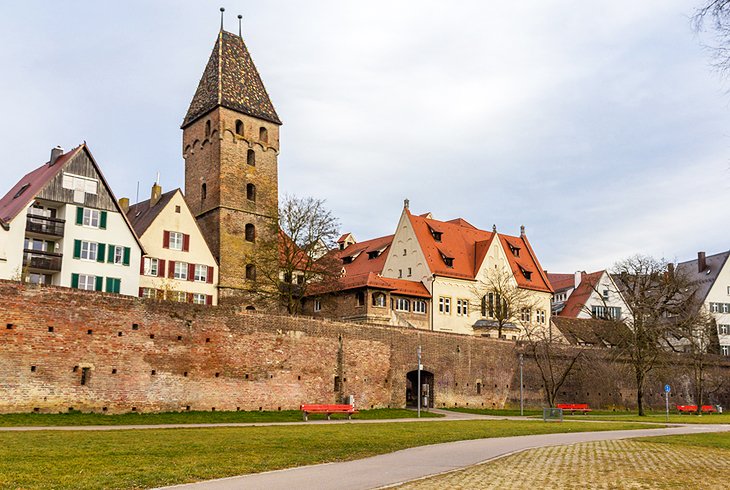
Most of Ulm's 15th-century town walls have been well preserved and provide an excellent means of exploring the old town. Built in 1482 along the banks of the Danube, the walls - originally designed as a deterrent against invaders - circle the town from the Lauseck Bastion, taking in the Fishermen's and Tanners' Quarters and the boat landing stages.
Along the way, you'll find the 36-meter-tall Metzgerturm, or Butchers' Tower, which leans several feet off the vertical. You'll also find many wonderful cafés and restaurants, as well as quiet riverside spots ideal for picnics.
Visit Museum Ulm
One of Germany's finest collections of Upper Swabian art and culture resides in Museum Ulm. Highlights of its outstanding collections of art, archaeology, and history include the 40,000-year-old Lion Man, carved from mammoth ivory and the oldest known animal carving in the world.
Works by 20th-century artists including Klee, Picasso, and Lichtenstein are shown in the Kurt Fried Collection. Take a little time to also see the sculptures by Michel Erhart Joerg Syrlin the Elder and paintings by Martin Schaffner and Bartholomew Zeitblom.
Connected to the museum and worthy of a visit is the Archive of the Ulm School of Design. This popular gallery is well-known for its displays of artworks from the 50s and 60s.
Address: Marktplatz 9, Ulm, Germany
Official site: www.museumulm.de/en
Take a Side Trip to Wiblingen Abbey
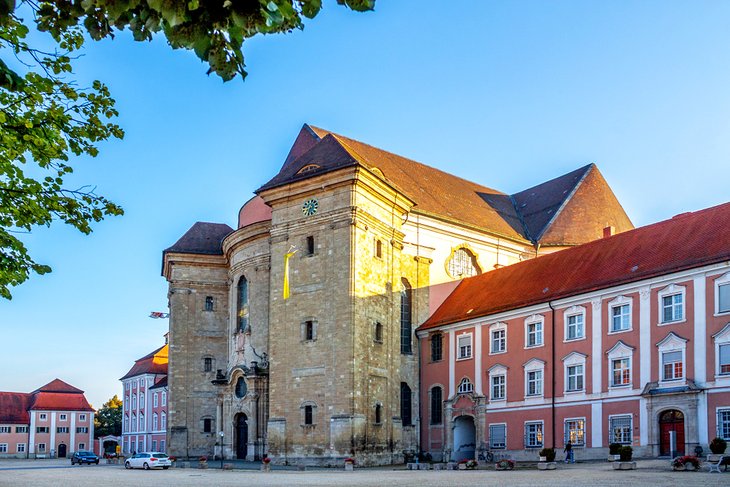
Located just five kilometers from Ulm is the large Benedictine monastery of Wiblingen. Founded in the 11th-century and dissolved in 1803, Wiblingen Abbey (Wiblingen Kloster) is home to a magnificent Baroque church built in 1780, with outstanding sculptures and ceiling paintings by Januarius Zick.
The monastery's highlight, though, is its sumptuously decorated Rococo library, one of the finest examples of that style. Its interior is ringed by a gallery set on highly ornamented columns, and combines with the statues and ceiling fresco for an airy and whimsical style that seems almost frivolous for a monastery.
Today, the building houses the Museum im Konventbau, which paints a fascinating picture of the role of the abbey over the centuries.
Address: Schlossstrasse 38, Ulm-Wiblingen, Germany
Official site: www.kloster-wiblingen.de/en/
Visit the Museum of Bread Culture (Museum Brot und Kunst)
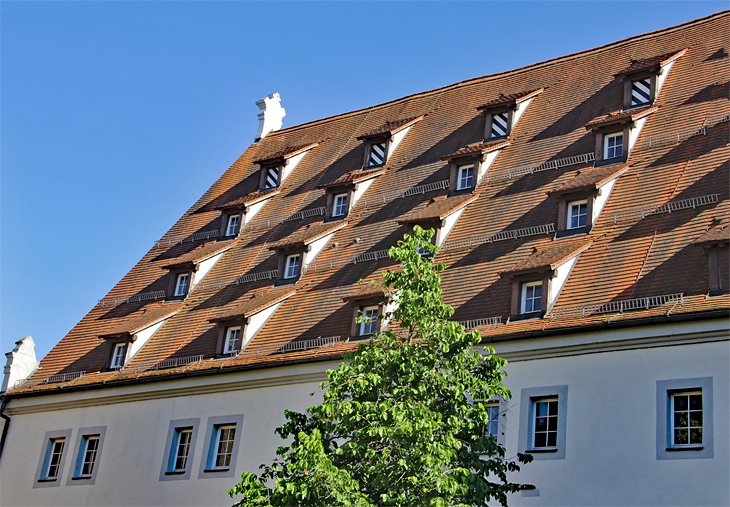
One of Ulm's most unusual places to visit, the unique Museum of Bread Culture (Museum Brot und Kunst) offers a fascinating insight into the history of bread and baking from ancient to modern times. Exhibits cover everything from the growing of grains and harvesting of crops, to the social implications of bread (or a lack thereof) upon populations, as well as its impact on art and culture.
The museum also houses an impressive art collection based upon these themes. It includes pieces from the Middle Ages to modern times by artists such as Rembrandt, Dalí, Picasso, and Man Ray. English language guided tours are available.
Address: Salzstadelgasse 10, 89073 Ulm, Germany
Official site: https://museumbrotundkunst.de/en
The Oath House
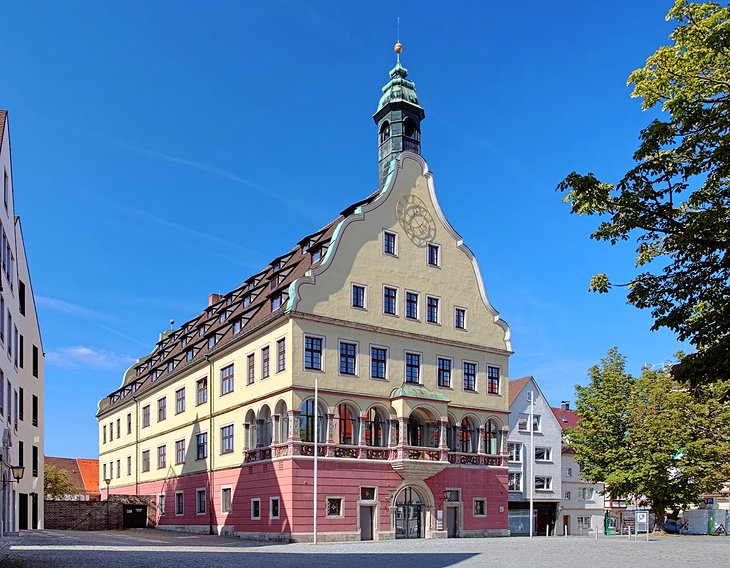
A highlight of Ulm's old town center is the wonderful Oath House, or Schwörhaus. Built on what was, in AD 854, the old Kings Palace, the existing 17th-century structure becomes the most important building in Ulm the first Monday of July. Known as Oath Monday, it's on this day that the city's Lord Mayor gives his account of the previous year's events.
What's remarkable is that this tradition has taken place every year since 1397, and the day is marked with celebrations and events. Also noteworthy here is the local history museum, which is located within the Oath House.
Another nearby tourist attraction that's worth a visit is the lovely Christopher Fountain dating from 1584.
Address: Weinhof 12, Ulm
Take the Kids to the Tiergarten

For those traveling with children, one of the best places to visit is the delightful, though small, Tiergarten Ulm. Certainly no equal to the outstanding zoos in Leipzig or Munich, Ulm's Tiergarten has a respectable collection of exotic animals along with goats, deer, alpacas, and other animals. More exotic creatures live in the Tropical House, where you can see wallabies, Capuchin monkeys, Mississippi alligators, crocodiles, gibbons, and other warm climate species.
Children are especially fascinated by the aquatic displays, which include an 18-meter-long Danube Tunnel for cold water fish, and tropical fish swimming among coral and sea anemones. A nice park adjoins the zoo, with sculptures and playgrounds for children.
Address: Friedrichsau 40, Ulm, Germany
Danube Swabian Museum
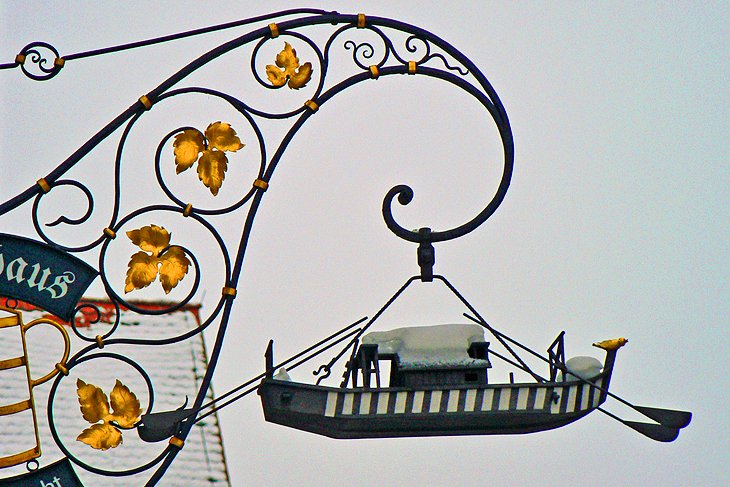
The Danube Swabian Museum (Donauschwäbisches Zentralmuseum) is well worth visiting for a better understanding of the regional history. Highlights include the Ulmer Schachtel (literally the "Ulm Box"), an 18th-century wooden boat used to transport emigrants down the Danube as far as Hungary.
Many of the museum's fascinating exhibits in fact focus on the story of these immigrants, who settled at various points along the Danube in the 17th and 18th centuries, showing the everyday life of those villages and towns between Budapest and Belgrade where the Danube Swabians settled.
The exhibits not only trace the lives of these Swabian people through a history marked by world wars and Iron Curtain repressions, but consider the current status of German minorities in Hungary, Romania, Serbia, and Croatia. Guided tours are available, and a gift shop is located on-site.
Address: Schillerstraße 1, Ulm, Germany
Official site: www.dzm-museum.de/en/
Kunsthalle Weishaupt
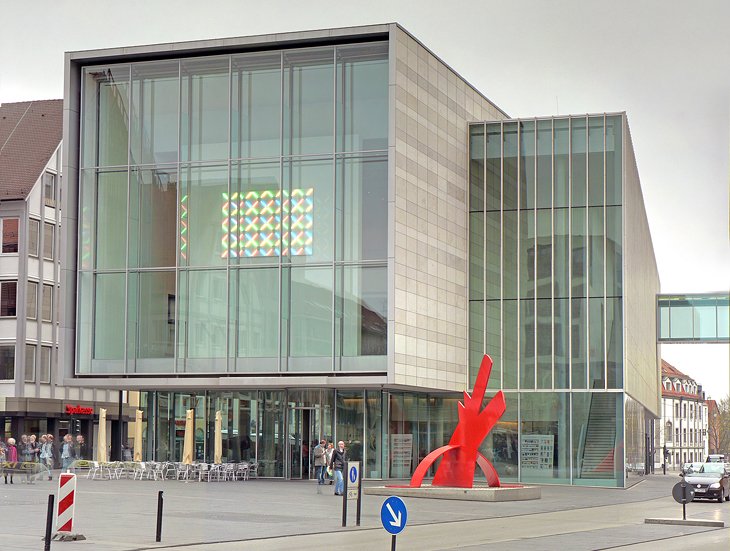
You can't miss this sleek modern building next to the more traditional architecture of the Ulm Museum - especially because in front of it stands the large red Dog sculpture by Keith Haring. Inside this must-see attraction are works selected (and rotated annually) by art collector Siegfried Weishaupt, representing 20th-century and modern art movements.
Included are works by Andy Warhol, Jean-Michel Basquiat, Mark Rothko, Josef Albers, Dan Flavin, Willem de Kooning, Kenny Scharf, Tony Cragg, Robert Longo, and others. Don't miss the great views of the cathedral spires from the balcony. Guided tours are available, and if you're feeling peckish, be sure to stop in at the on-site café.
Adress: Hans-und-Sophie-Scholl-Platz 1, Ulm, Germany
Official site: http://kunsthalle-weishaupt.de/en/
Visit Ulm's Einstein Fountain
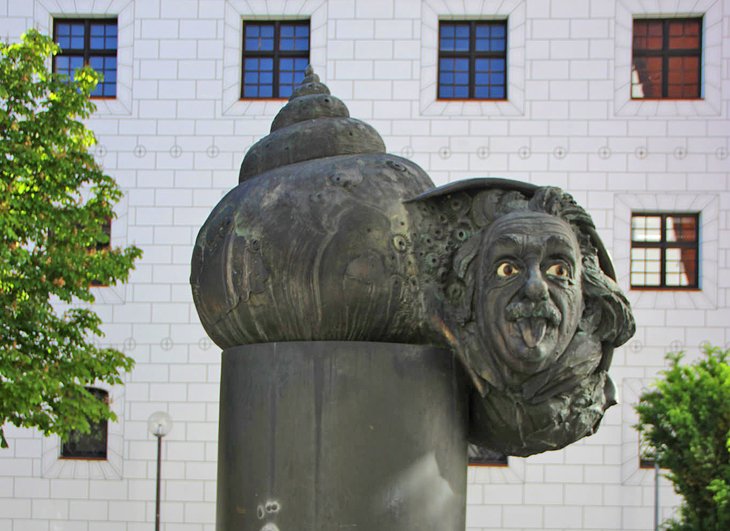
While fountains are a common sight in many European cities, as are monuments to famous native sons, none is more unusual that Ulm's Einstein Fountain (Einstein Brunnen). This unique cast bronze sculpture depicts a large snail (chosen to represent nature and wisdom) standing on a rocket (representing the scientist's studies in time, space, and atomic theory) that shoots water from its base.
Emerging from the snail is the head of Einstein in the famous pose with his tongue stuck out and hair in wild disarray. The fountain, which sits at the 16th-century Zeughaus arsenal, was created by Jürgen Goertz in 1984. Einstein was born in Ulm, but lived here only the first year of his life.
Address: Am Zeughaus 15, Ulm, Germany
Map of Attractions & Things to Do in Ulm
More Related Articles on PlanetWare.com
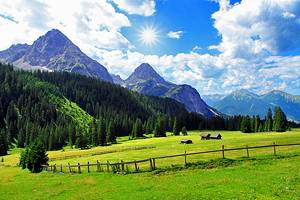
Places to Visit near Ulm: Ulm sits between Germany's popular Black Forest region of Baden-Württemberg, with its lively capital of Stuttgart to the west, and the many attractions of Bavaria to the east. To explore Bavaria's capital, see our handy page on the top tourist attractions in Munich.
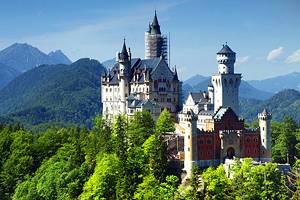
Where Else to Go in Germany: To the northwest in Baden-Württemberg, you'll find the attractions of Heidelberg and the beautiful spa city of Baden-Baden, at the edge of the Rhine Valley. Across the Rhine River in France, you can visit Strasbourg and discover the medieval towns and villages of Alsace.
